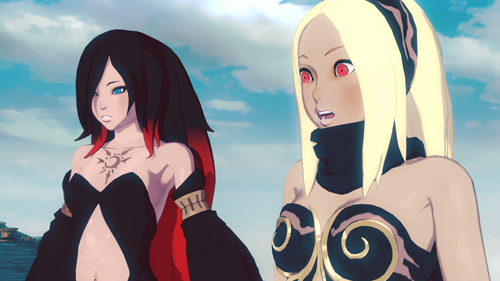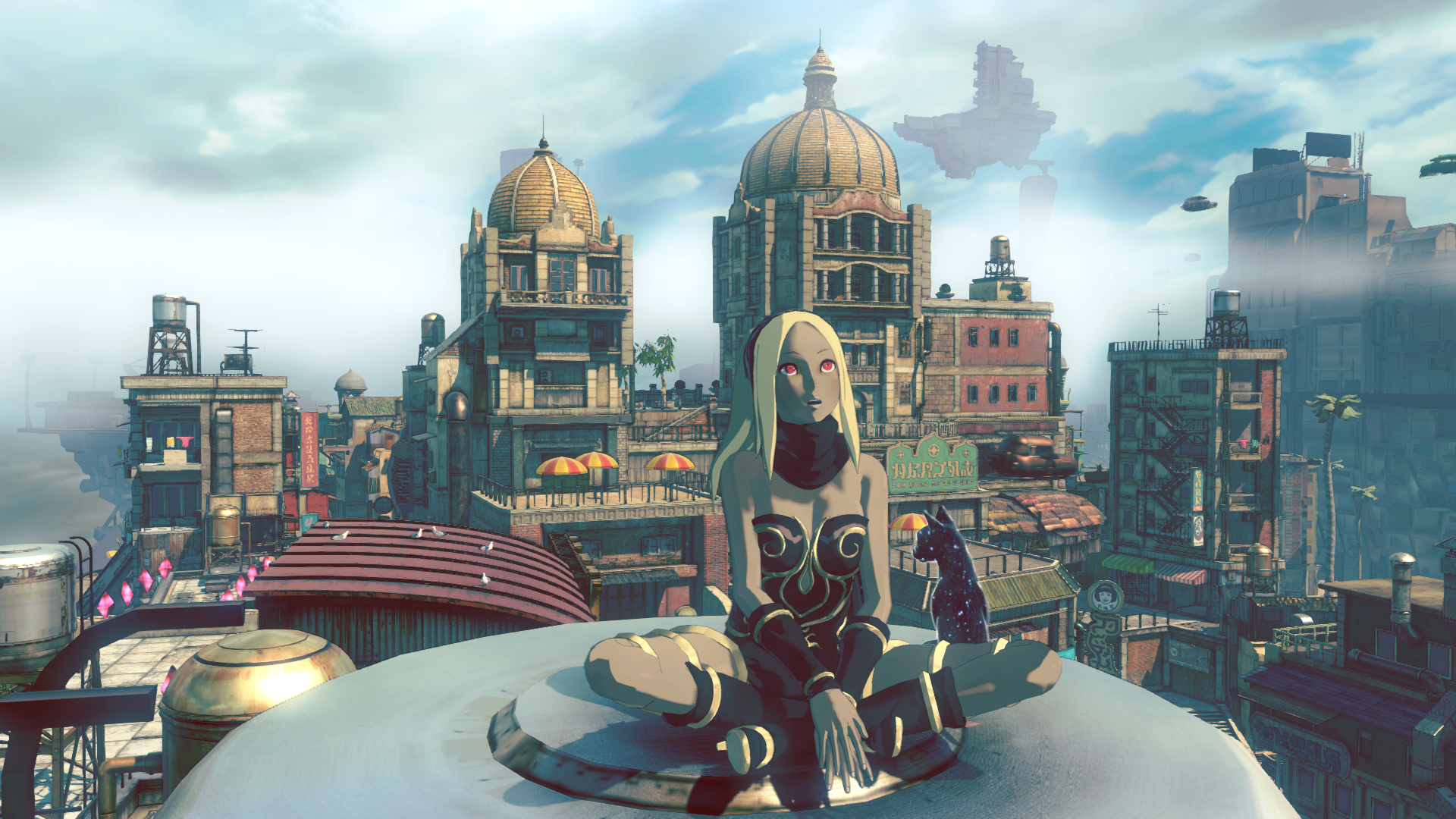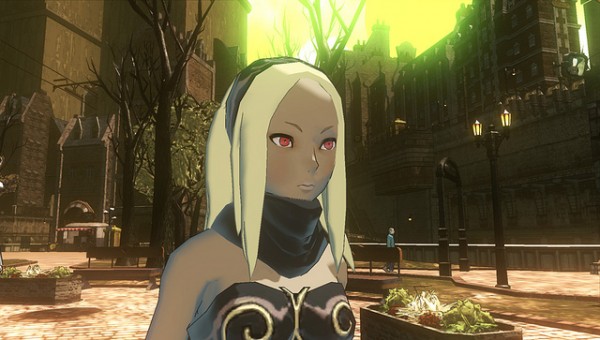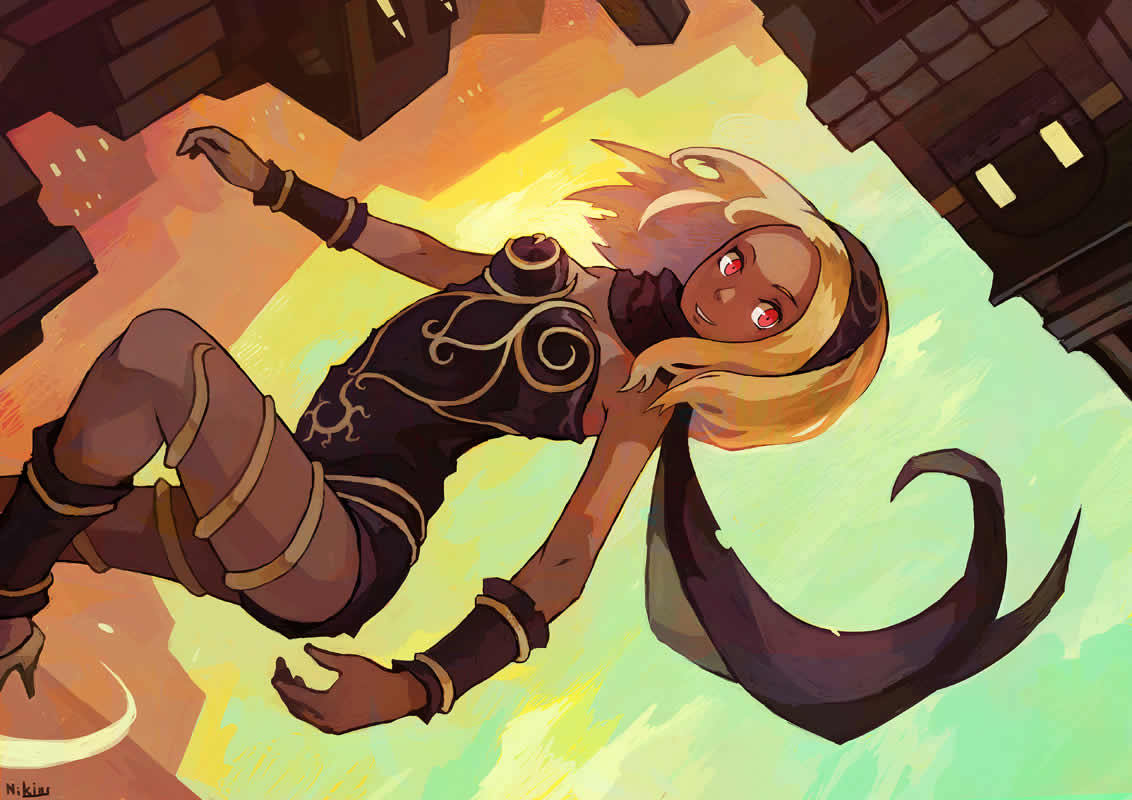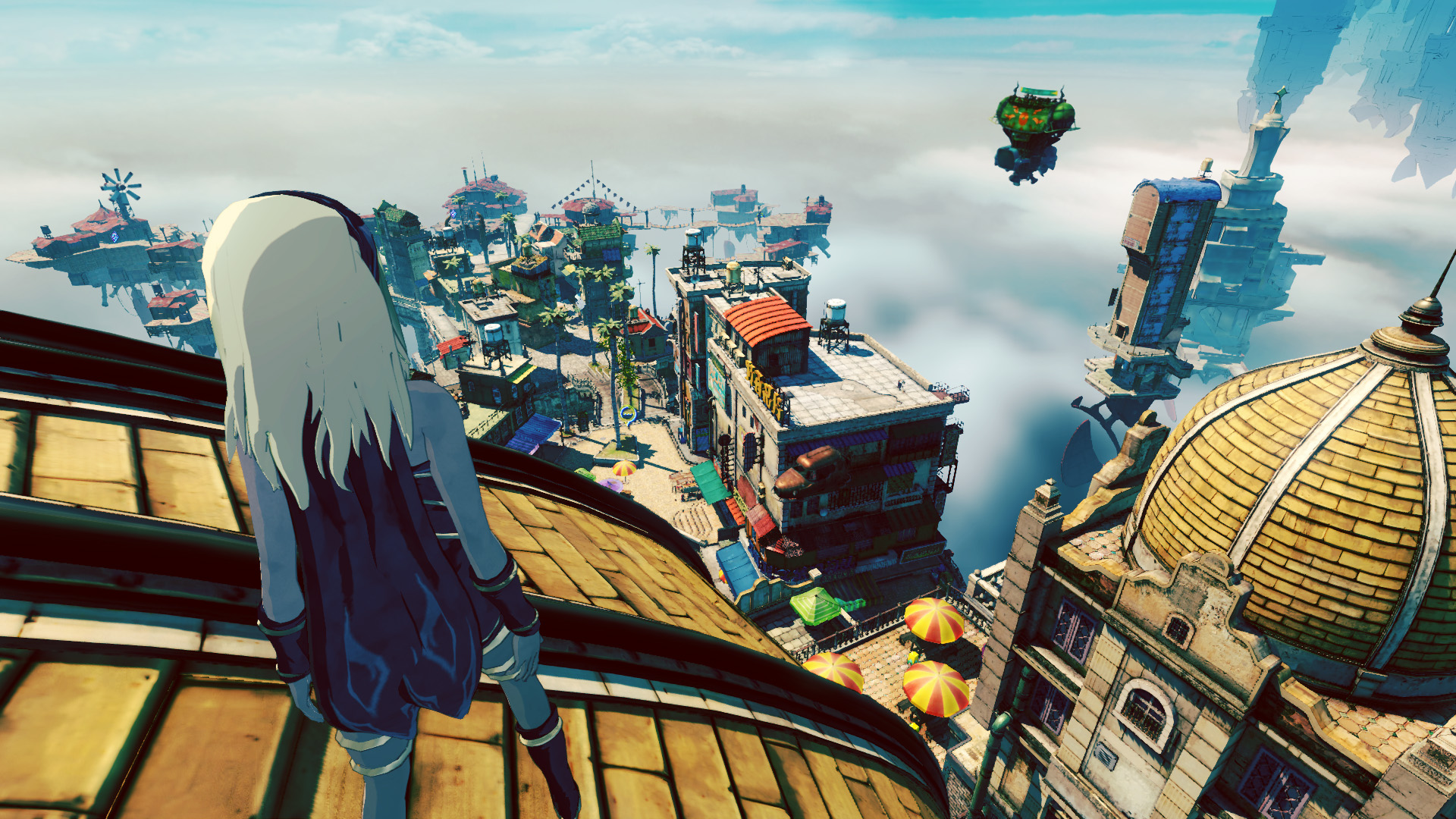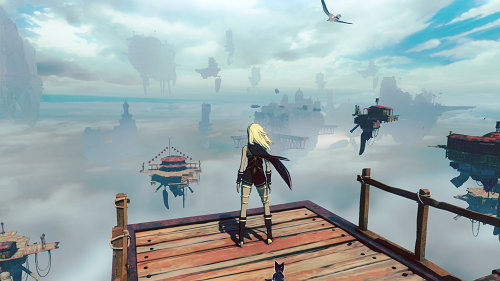
When I first played the original Gravity Rush it felt like an experiment in gameplay mechanics that was mostly successful. There were niggling issues with the camera, somewhat clumsy combat controls and meaningless side quests, but Kat’s character and story were engaging enough to look past those problems. The announcement of Gravity Rush 2 presented the potential to further expand on Kat’s character with another engaging story, while improving the issues with the original. Kat and her supporting cast are certainly as interesting as ever, but those same niggling issues have returned once again to hold the whole experience back.
As a Shifter, Kat’s modus operandi is to create a localised shift in gravity, causing her to fall in the direction you select. See a wall you want to climb? Fall onto it with your abilities and walk up it like you’re on the ground! See some crystals you’d like on the ceiling? They’re just a button click away. It’s a mechanic that feels just as fresh and interesting as it did in the first game. There’s nothing quite like the feeling of a controlled fall through the world, effectively flying through the skies, but without the level of control you would expect while in flight. By its very nature, there isn’t much control in falling, but with a character who can control gravity at a whim, you would think we could suspend disbelief a little and allow her more control in changing the direction she is falling. To change direction, you have to come to a complete stop, before beginning to fall once again in the new direction you want to move in. This wouldn’t necessarily be a big issue, except that the game includes multiple aerial chases of enemies that are significantly more manoeuvrable than yourself. I feel like there had to be a more elegant solution for directional changes, instead of constantly double clicking your bumper whenever you need to change direction. It’s not a big issue, but is one of many such small frustrations with the controls that gradually built up as I played the game.
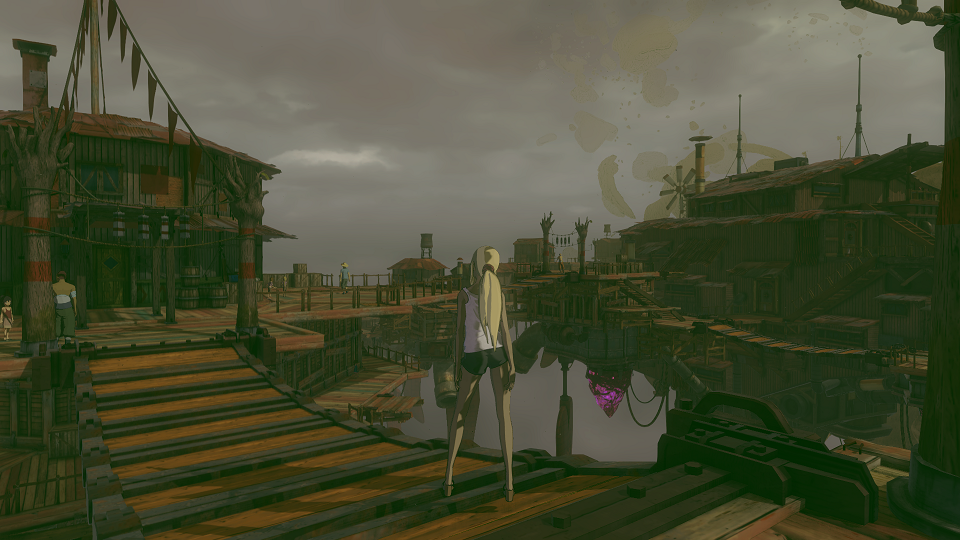
Kat’s combat style is a mixture of ground-based melee attacks, aerial based assaults and ranged projectiles that combine to create a whole that is bigger than the sum of its parts. Some enemies are better approached from the ground with a series of kicks, while others are best tackled from the sky. Diving from the sky feet first to deliver a gravity kick into the face of an enemy is immensely satisfying when it lands, but the lack of precision controls can sometimes make it an exercise in futility. When fighting the Nevi, the main enemies of the Gravity Rush series, you need to target big glowing balls on their bodies to defeat them. The word ‘big’ would make you think it’s difficult to miss them, but it’s surprisingly easy to do. You see, Kat’s movements and attacks have a large range of motion, but her attacks themselves have a relatively small area of impact. What this means is that it’s easy to move too far through an attack animation or movement, resulting in her kicks instead skewing off to the side of an enemy. Gravity kicks are also a completely linear attack, resulting in slight enemy movements throwing them off completely, causing you to simply fly past the enemy before you even realise what’s happening.
Both issues are alleviated somewhat by the new Gravity Styles that are unlocked as you progress through Kat’s journey. Lunar Style reduces gravity’s impact on you, allowing you to jump higher, walk on water and skim across the ground. Gravity Kick also changes, becoming a homing kick that teleports you towards an enemy. Attacks also chain together between enemies, resulting in a better combat flow than the original style, but have less of an impact due to the gravitational reduction. Jupiter Style has the opposite effect on Kat, increasing her weight and pulling her faster towards the ground. Attacks are heavier, but don’t chain together, and Gravity Kicks deliver a large area of effect attack that devastates all enemies in range. Freely swapping between these styles, as well as Kat’s original Gravity Style, allows you to take on combat encounters in any way you prefer and make battles more interesting. There is also a fourth combat style that effectively resolves all issues with precision controls during combat, but as a time limited special ability I don’t believe it qualifies as a real solution. A better solution would have been the inclusion of a target lock, a staple of other action based games that require relative precision in their melee combat systems. All of this isn’t to say that combat in Gravity Rush 2 is bad or boring, but the frustrations with the controls take away from a combat system that could have been so much more.
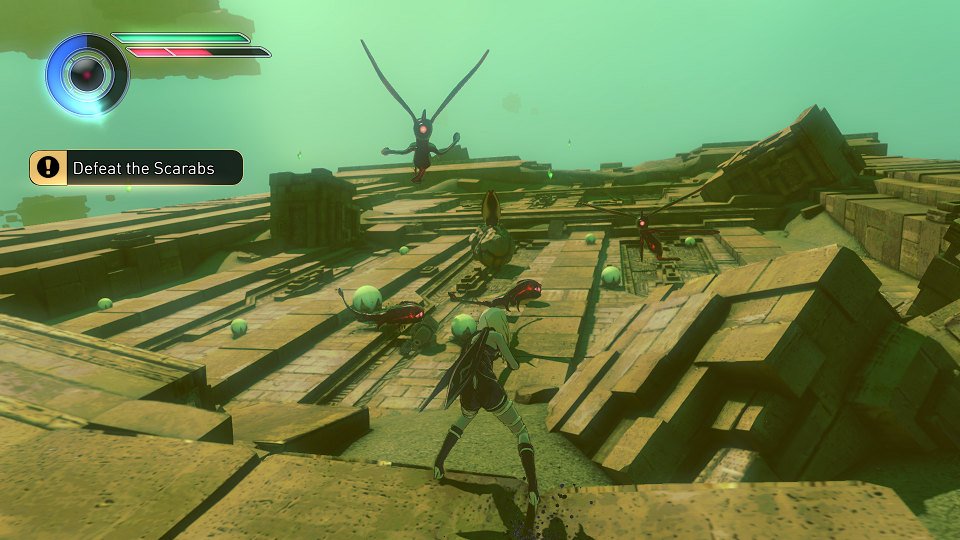
I wished the frustrations with the controls in Gravity Rush 2 ended there, but much like the original game, there are some major issues with the camera and how it controls. By default, the camera will attempt to put itself behind you as you fall or move around the world. In larger, open areas this is fine, as there is heaps of room for the camera to perform its automatic corrections and adjustments. As soon as you enter one of the many smaller areas story missions take place in, however, the camera begins having fits. If you move too close to a corner during movement, the camera starts flinging itself about as it tries and fails to get itself into position. This might sound easy to avoid, but when you’re in a game that regularly requires shifting gravity and climbing walls, you really can’t avoid getting close to corners or joins in walls. It gets especially bad during combat, as you’re constantly fighting the errant camera to find your enemies, all while they’re still attacking you. This is made more frustrating by the generally long length of story missions including these sections. For whatever reason, the longest sequences in the game include multiple enclosed spaces and lengthy corridors that cause the camera to bug out and you to disconnect from the game.
Beyond these corridor sequences and enclosed spaces, the general mission design of the game can be quite uninspiring and lacklustre, with flashes of brilliance. While you would expect – and want – to spend most of your time using your gravity powers in interesting ways and fight the Nevi, you spend a surprising amount of your time falling towards people to speak to and performing fetch quests. Most story missions result in some form of satisfying combat, but not all do, and the lead up to that point is generally frustrating or boring. The worst of this takes two forms: instant-failure stealth sections that actively discourage the use of your powers, and the Rift World sequences. The Rift World is a new area in Gravity Rush 2 that is used as a mining ground by the world’s population and is also where you unlock your new Gravity Styles. The main issue with the Rift World that every mission that takes place in plays out in the exact same format: utilise platforming skills of choice to get to Area 1, complete small combat trial, kick stones to gain gems, progress to next area. This sequence generally repeats four to six times before you complete the mission and is boring the second time you enter it, let alone the fourth time.
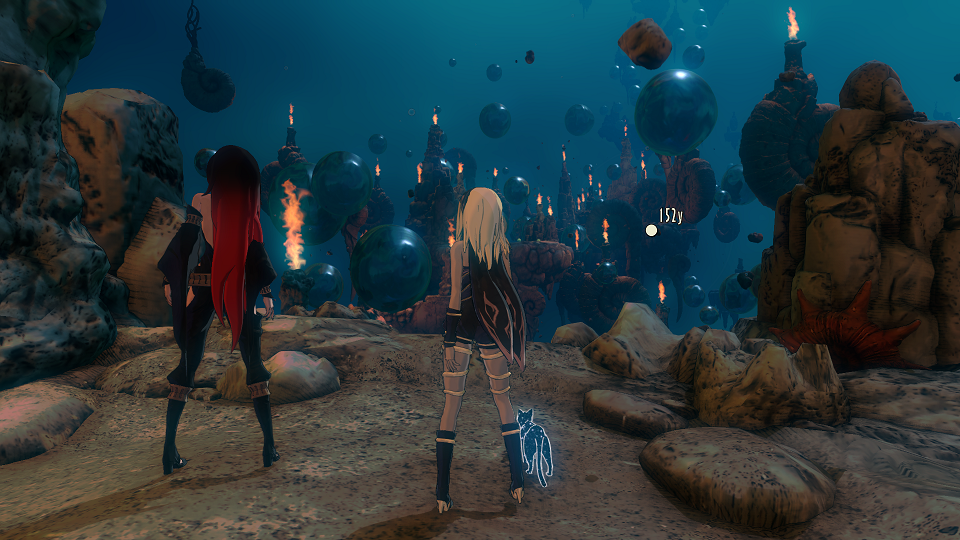
The boss battles and characters are the real shining light of both the story and the missions that comprise it. Boss battles tend towards the colossal and bombastic, with giant city sized bosses laying waste to you and everything around in an effort to destroy the world, but you’ll also face a series of smaller, more nimble bosses in your quest to right the wrongs of the world. Each boss battle is unique, with its own set of attack patterns to learn and specific elements to exploit. One of the best moments in the game is a series of consecutive boss battles towards the end of the game that sees you initially play as Raven, before continuing the fight as Kat. The sequence continually escalates, making you feel more and more powerful as it goes, culminating in the most satisfying moments of the entire game. Altogether, they do a great job of making you feel like an incredibly powerful Gravity Shifter, as they should, and are the most exhilarating moments of the game.
The characters and the relationships they build are the real strong point of Gravity Rush 2 and the main reason I would suggest playing it. Kat’s constant positivity and her ever present need to help those around her are immediately and enduringly endearing and charming. Her soliloquys as she meets the more frustrating members of the cast are dry and cynical, but they never colour her view on the world. Kat herself doesn’t necessarily grow as a person throughout the story, although we do finally learn more about her past, but other characters in the game do. Lisa begins as a highly negative person who considers herself a realist, but over time she grows into a stalwart leader who will do anything to help the people around her. The one issue with the fantastic characters of the game is that most of them effectively disappear after the first half of the game ends and you find your way back to Hekseville. While the returning cast from Gravity Rush are interesting, the villain of this arc isn’t given enough time to really build his menace. He initially begins as a good person, a hero to the city who has unified it after the events of the first Gravity Rush, and within an hour his character is completely flipped and he is set to destroy the world. While his story is highly personal, it isn’t given enough air time to have any real impact and the character flip is underwhelming as you haven’t been enough time to grow to like him as a character. My feeling is that the Hekseville arc needed to be significantly longer than it is, so that its events and characters had enough weight or impact to them to really matter.
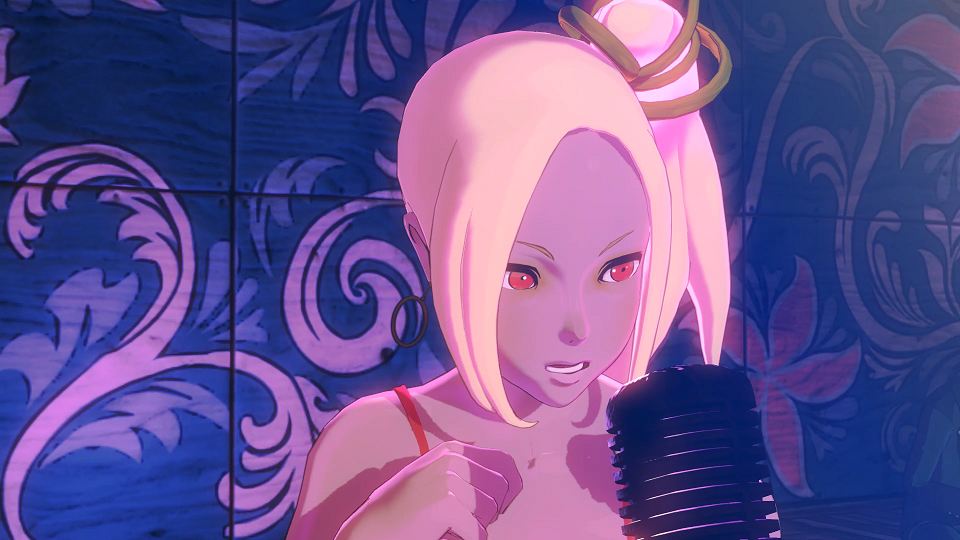
The story itself falls into a similar trap, where the opening half of the game is filled with character development and a continuous narrative, as you end a regime of dictatorship and deal with the ensuing aftermath. The ever-present class war, the struggles it brings and how the characters react to it provides an interesting back drop for the characters to bounce off. Reading and watching as the characters deal with and grow from the situation around them is engaging and endearing, but it doesn’t last for long enough. After a massive boss battle, all of this character growth and world building is completely tossed aside and effectively ignored, save for some cameo moments during later boss battles. Once I arrived in Hekseville I found myself disconnected from the world, as the story began attempting to start its world-building process again, except in a much more hurried and haphazard way. Characters from the original Gravity Rush are thrown at you constantly in small, inconsequential cameos and the new characters, who form the crux of the setup and story for this arc, are basically thrown straight into the spotlight from nowhere.
It’s an unusual decision, but it’s nothing compared to hiding a full story arc behind a false game ending. After the final boss battle of the Hekseville arc, a full set of credits rolls and the world is opened back up to you, but the game isn’t actually over. After completing a series of conversational pieces, which certainly aren’t marked as anything special, you unlock what is the true final arc of the game. I won’t go into detail of what happens, but the final arc is all about Kat and Raven and their lives before the beginning of the first game. It culminates in the earlier mentioned sequence of boss battles, which were my favourite moment of the entire game and increased my opinion of the game as whole. To have this sort of content hidden behind a false ending is absurd, especially considering that the Hekseville arc is the weakest of the entire game.
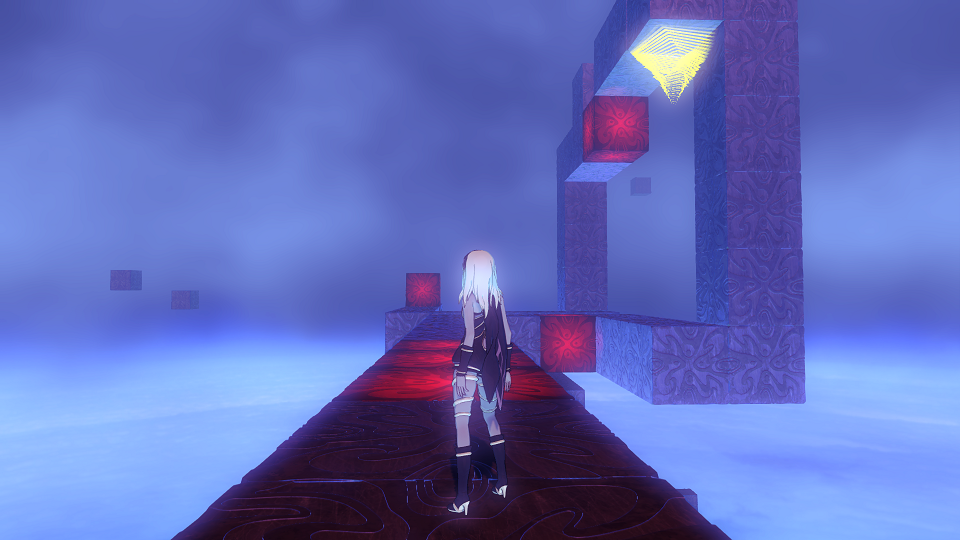
All of these mechanics, stories, characters and battles take place in one of the most incredible looking worlds I’ve seen in a game. While it won’t win any technical awards, the art style and how it’s used to create a cohesive world is incredible. Watching as buildings emerge from the clouds and the way the light filters through onto the streets is incredible and was a highlight of my time with the game. I found myself running through streets more than I would have expected, just so I could look at the colourful surrounds. The music is also incredibly beautiful, with a mixture of energetic jazz pieces, slower down-tempo instrumentals and orchestral compositions as moments build towards a climax. Kohei Tanaka created something I consider to be one of the best video game soundtracks I have listened to and one of the few that I would consider buying to listen to at my leisure.
After the long wait for the follow up to Gravity Rush, its sequel isn’t really the improvement that we had hoped for. The issues that plagued the original are still present, with clumsy controls, poor camera controls and some perplexing design and story decisions, but all of these manage to be transcended. Just like Kat with her endless positivity and perseverance, Gravity Rush 2 works past its flaws and becomes a great experience despite the baggage it brings along for the journey.
- Endearing and interesting characters
- Incredible soundtrack
- Gorgeous environments and art style
- Excellent final sequence
- Combat controls are still clumsy
- Camera still needs to be fought
- Frustrating story structure
- True ending arc is hidden

